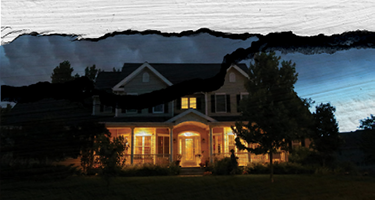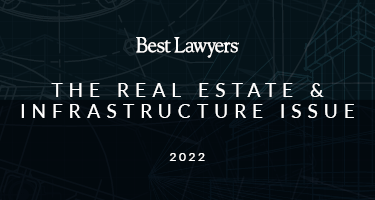Title insurance is a standard requirement in most real estate transactions and properly underwritten title insurance is needed for both lenders and property owners. When a project is for land to be developed, it is important for developers and lenders to know whether the building plans are allowed under current zoning and restrictions affecting the property, whether the building plans disclose any possible encroachments, and whether someone who has mineral rights or water extraction rights might damage the planned improvements.
In this article, Lillian E. Eyrich, a senior associate and title insurance attorney at Steeg Law, provides an overview of the title insurance endorsements that are useful to developers and lenders for their construction projects.
Earlier Versions of the Endorsements for Improved Property or Vacant Property
The title insurance industry has had endorsements in place for many years to give owners and lenders title insurance coverage for property that is already developed, and for property that is vacant. You can obtain endorsements insuring you against losses sustained:
- if existing improvements violate current zoning ordinances, current setback lines or current restrictions;
- if someone forces the removal of existing buildings if there are undisclosed encroachments onto servitudes or easements on the insured property or onto adjoining property;
- or if there is damage to existing buildings caused by the use of the surface of the land for exploration of minerals or water, or caused by a third party’s use of its servitudes and easements affecting the property.
If the land is vacant, there are similar endorsements to state what the existing zoning classification and permitted uses are, and to give you insurance if there are any undisclosed existing violations of restrictions affecting the property.
Endorsements to Help Developers and Lenders With Planned Construction
The endorsements for vacant land are informative, but do not address proposed building plans. Developers and lenders do a lot of research and due diligence when planning construction, including research into zoning, building setback lines, restrictions, building permits, locations of utilities, and related construction issues. When choosing title insurance for the project, the developers and lenders want insurance to cover losses in the event that their construction plans do not comply with existing zoning ordinances, building restrictions, and servitudes affecting the property.
To respond to customers’ needs, the title insurance industry created versions of the endorsements for unimproved property but for which there are proposed building plans, to assist buyers and lenders who are preparing for construction projects. These are commonly referred to as “Land Under Development” endorsements.
The parties need to provide zoning reports and detailed architectural plans, including drawings showing the proposed improvements overlaid onto a property survey showing the setback lines, servitudes, and easements affecting the property, so that you can see where the buildings and improvements will be by comparison to the setback lines, servitude areas, and easement areas. The plans will also need to provide details about the height and dimensions of the proposed buildings, as well as the location, types, and number of proposed parking spaces. In essence, the plans need to provide a detailed depiction of what the development will look like when laid out on the property.
After reviewing the plans, the title insurer may be willing to provide coverage that says “if you build in accordance with these specific plans, we take the risk that your future improvements will not violate the existing building restrictions, setback lines, zoning ordinances, or servitudes, and take the risk that your future improvements will not be damaged by use of the surface of your land for the extraction of minerals or water.” The Land Under Development endorsements are separated into different categories, so the developer and lender may be able to procure some, but not all, of this insurance for the construction project.
You Need to Know What Is Not Covered By the Endorsements
It is important to keep in mind that the Land Under Development Endorsements give coverage only for proposed construction to be built in accordance with zoning ordinances, restrictions, servitudes, and easements that exist on the date the title insurance policy is issued. For example, if the property is zoned for commercial use and allows a 50-foot high medical office building on the date the policy is issued, but the zoning classification then changes to residential use after the date of the policy but before the developer has secured a permit to build the medical office building, that loss is not covered, because the zoning changed after the date of the title policy. The title company cannot insure that zoning, restrictions, and servitudes will not change, so the Land Under Development Endorsements are by necessity limited to what is known on the date of the title policy.
Developers and Lenders – What You Need to Know
As the developer or lender, you will need to review your project to decide which of these Land Under Development endorsements may be important for you, and then work with your title agent to find out whether they are available in your title policy and what the title insurance premium is for each endorsement, so that you can decide whether the cost of the insurance is appropriate for your project budget. Brief descriptions of the various endorsements are included below, but keep in mind that there are details and limitations in each endorsement that you should review carefully when deciding whether an endorsement is appropriate for you.
Determining Whether It Is an Appropriate Risk to Issue a Land Under Development Endorsement
As with any title insurance endorsement, title agents and underwriters review the specific property and what affects it to determine whether it is an appropriate risk to issue the Land Under Development endorsements. They look at the zoning reports in addition to the servitudes and easements, restrictions, rights of first refusal, options to purchase, mineral leases and reservations shown in a title commitment. The agents and underwriters also review the survey and detailed building plans, to see whether these show any encroachments, either onto the insured property, onto adjoining property, or onto the servitudes and easements running across the insured property, and to determine whether the planned buildings comply with the current zoning ordinance and restrictions affecting the property. If they are satisfied with all of the documents and building plans, they tell the developer and lender which of the endorsements are available, and what the cost is for each.
The American Land Title Association (ALTA) is the title industry’s trade association which creates the endorsements used by title insurance companies in most states. The endorsements have the word ALTA in the name, with the endorsement number and brief title, which helps parties doing business in different states compare what is available for a particular project. Here is the list of Land Under Development endorsements currently available in Louisiana. Many of these are available in other states, too.
Land Under Development Endorsements
Unless otherwise indicated, these endorsements are available for either owner’s policies or lender’s policies.
“ALTA 3.2-06 Zoning – Land Under Development” for insurance (i) stating what the current zoning classification and permitted uses are; and (ii) against loss caused by a final court order requiring the removal of an existing or future improvement (built in accordance with identified building plans) because it violates the lot size, floor space, setback lines, building height, or number of parking space requirements of the current zoning classification. The endorsement does not cover losses caused by (i) the failure of the parties to obtain necessary permits and consents that are required by law; (ii) the invalidity of the existing zoning ordinance until there is a final court order or judgment that the current zoning ordinance is invalid, which prohibits the use or proposed use listed in the endorsement; or (iii) the refusal of someone to buy or lease the property or to make a mortgage loan on the property.
“ALTA 9.7-06 Restrictions, Encroachments, and Minerals – Land Under Development” (Lender’s policies only) for insurance (i) against loss if the property violates a restriction in such a way that the lender’s mortgage loses its priority or is not enforceable against the property; (ii) that there are no unlisted existing violations of existing restrictions and that future improvements (built in accordance with identified building plans) will not violate the existing restrictions; (iii) that there are no unlisted recorded notices of environmental violations; (iv) against forced removal of an existing or future improvement (built in accordance with identified building plans) because it violates an existing setback line, if the violation is not listed in the policy; (v) against loss if there is an unlisted encroachment by an existing or future improvement (built in accordance with identified building plans) onto adjoining property or onto a servitude or easement affecting the property, or if there is an unlisted encroachment by an improvement on adjoining property onto the property on the date the policy is issued; or (vi) against loss if an existing or future improvement (built in accordance with identified building plans) is damaged because of the exercise by a third party of an existing servitude, easement, or right to use the surface of the property for mineral development.
“ALTA 9.8-06 Covenants, Conditions and Restrictions – Land Under Development” (Owner’s policies only) for insurance (i) that there are no unlisted existing violations of existing restrictions and that future improvements (built in accordance with identified building plans) will not violate the existing restrictions, (ii) that there are no unlisted recorded notices of environmental violations, and (iii) against forced removal of an existing or future improvement (built in accordance with identified building plans) because it violates an existing setback line.
“ALTA 28.3 Encroachments – Boundaries and Easements – Described Improvements and Land Under Development" for insurance (i) against loss if there is an unlisted encroachment by specifically listed existing improvements or future improvements (built in accordance with identified building plans) onto adjoining property or onto a servitude or easement affecting the property, or if there is an unlisted encroachment by an improvement on adjoining property onto the property on the date the policy is issued; (ii) against forced removal of specifically listed existing improvements or future improvements (built in accordance with identified building plans) that encroach onto a servitude or easement if the party exercising the servitude demands the removal; or (iii) forced removal of specifically listed existing improvements or future improvements (built in accordance with identified building plans) from the insured property onto adjoining property.
“ALTA 35.3-06 Minerals and Other Subsurface Substances – Land Under Development” for insurance against loss caused by the forced removal or alteration of an existing or future improvement (built in accordance with identified building plans) if a third party forces the removal when exercising an existing right to use the surface of the land for the extraction or development of minerals. The endorsement does not cover loss resulting from contamination, explosion, fire, flooding, vibration, fracturing [fracking], earthquake, or subsidence, nor resulting from negligence of a someone exercising rights to extract or develop minerals.
“ALTA 36.4-06 Energy Project – Covenants, Conditions and Restrictions – Land Under Development – Owner’s” (Owner’s policies only) for insurance (i) that there are no unlisted existing violations of existing restrictions by existing electrical generating facilities on the property and that future electrical generating facilities on the property (built in accordance with identified building plans) will not violate the existing restrictions, (ii) that there are no unlisted recorded notices of environmental violations, and (iii) against forced removal of existing or future electrical generating facilities on the property (built in accordance with identified building plans) because it violates an existing setback line.
“ALTA 36.5-06 Energy Project – Covenants, Conditions and Restrictions – Land Under Development – Loan” (Lender’s policies only) for insurance (i) against loss if the property violates a restriction in such a way that the lender’s mortgage loses its priority or is not enforceable against the property; (ii) that there are no unlisted existing violations of existing restrictions by existing electrical generating facilities on the property and that future electrical generating facilities on the property (built in accordance with identified building plans) will not violate the existing restrictions; (iii) that there are no unlisted recorded notices of environmental violations; or (iv) against forced removal of an electrical generating facility on the property or a future electrical generating facility on the property (built in accordance with identified building plans) because it violates an existing setback line, if the violation is not listed in the policy.
“ALTA 41.3-06 Water -Land Under Development" for insurance against loss caused by the forced removal or alteration of an existing or future improvement (built in accordance with identified building plans) if a third party forces the removal when exercising an existing right to use the surface of the property for the extraction or development of water. The endorsement does not cover loss resulting from contamination, explosion, fire, flooding, vibration, fracturing [fracking], earthquake, or subsidence, nor resulting from negligence of a someone exercising rights to extract or develop water.



























